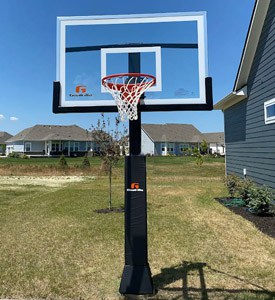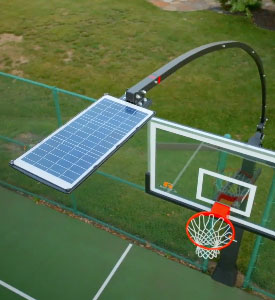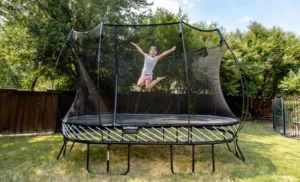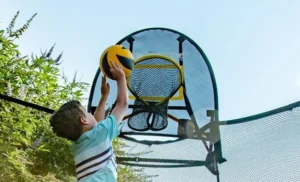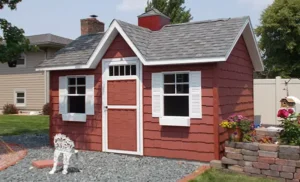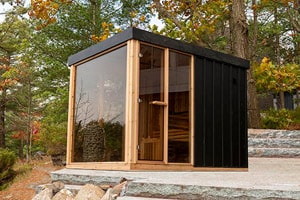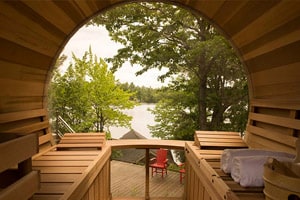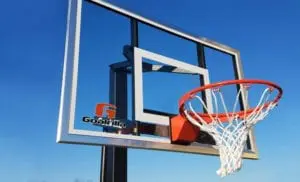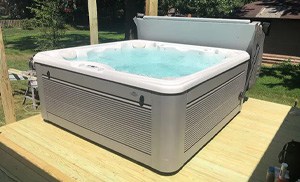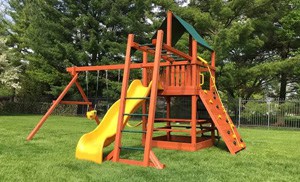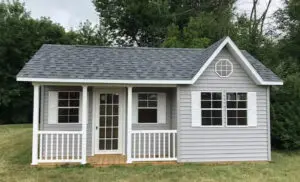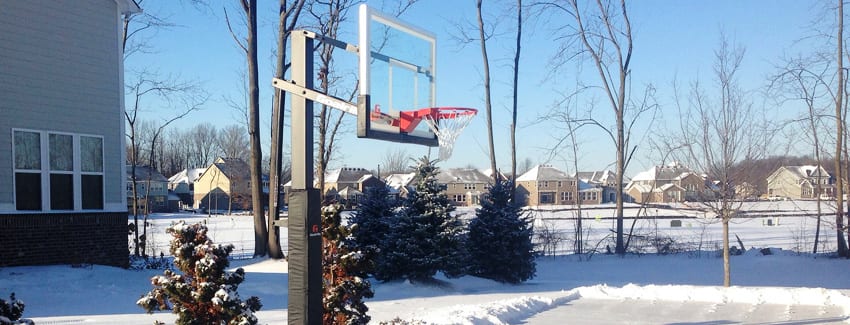There are two problems with pouring concrete in cold weather. Concrete can freeze before it has a chance to strengthen and concrete sets more slowly in cold weather. This doesn’t necessarily mean you have to wait until spring before you can enjoy that Goalrilla Basketball Goal that Santa left under the tree. If that were the case, you would have been better off with a lump of coal in your stocking. At least coal could have been used to heat up your home on those frosty nights.
So what do we need to do to break that cabin fever and get you out on the driveway playing basketball? Installing your anchor in colder weather is a matter of protecting the concrete until it can handle the cold on its own. Once the concrete has gained strength it will be good to go. There are two things you can do to help it along. You can change the concrete mix so it will set more quickly and you need to protect the concrete from the cold after it has been poured.
It is important to mix your concrete thicker than what you have typically seen or mixed in the past. Thicker concrete means less water has been added and with less water there is less to freeze. Typically you want a concrete slump of less than 4”. You can google the ins and outs of concrete slump but you probably won’t find it very interesting. Just be sure to mix your concrete nice and thick but thoroughly mixed. No powdery residue.
You can use a nonchloride accelerator to add to the concrete which can be very effective at speeding up the set up time. You don’t have to worry about it discoloring your concrete or leading to corrosion of your rebar like an accelerator that contains chloride. The colder the weather, the more accelerator you will need. There are many name brand non-chloride accelerators on the market but just ask one of the workers running around in a vest at the hardware store and they will help you out with what and how much you need.
Once your anchor is poured, it is important to cover it up. You can use straw, but if you have some old blankets to stretch across your anchor, it will be even better. Old moving blankets work great! Be sure not to disturb the anchor you just installed, you don’t want any surprises when you remove the blanket. If you’re lucky a few inches of snow might fall and cover your anchor. Snow makes a wonderful insulator. Wait a little longer for the concrete to set before standing up your Goalrilla goal. Seven days should do it.
There isn’t much to installing a Goalrilla basketball goal in the winter. Just use a nice thick concrete mix with a nonchloride accelerator and cover your work when you’re done. Before you know it, you’ll be shooting three-pointers while the neighbors are looking at their goal still sitting under the Christmas tree, wishing they had just gotten a lump of coal.
Written by David Gilles, Service Manager Basketball Goal Store / Recreation Unlimited




